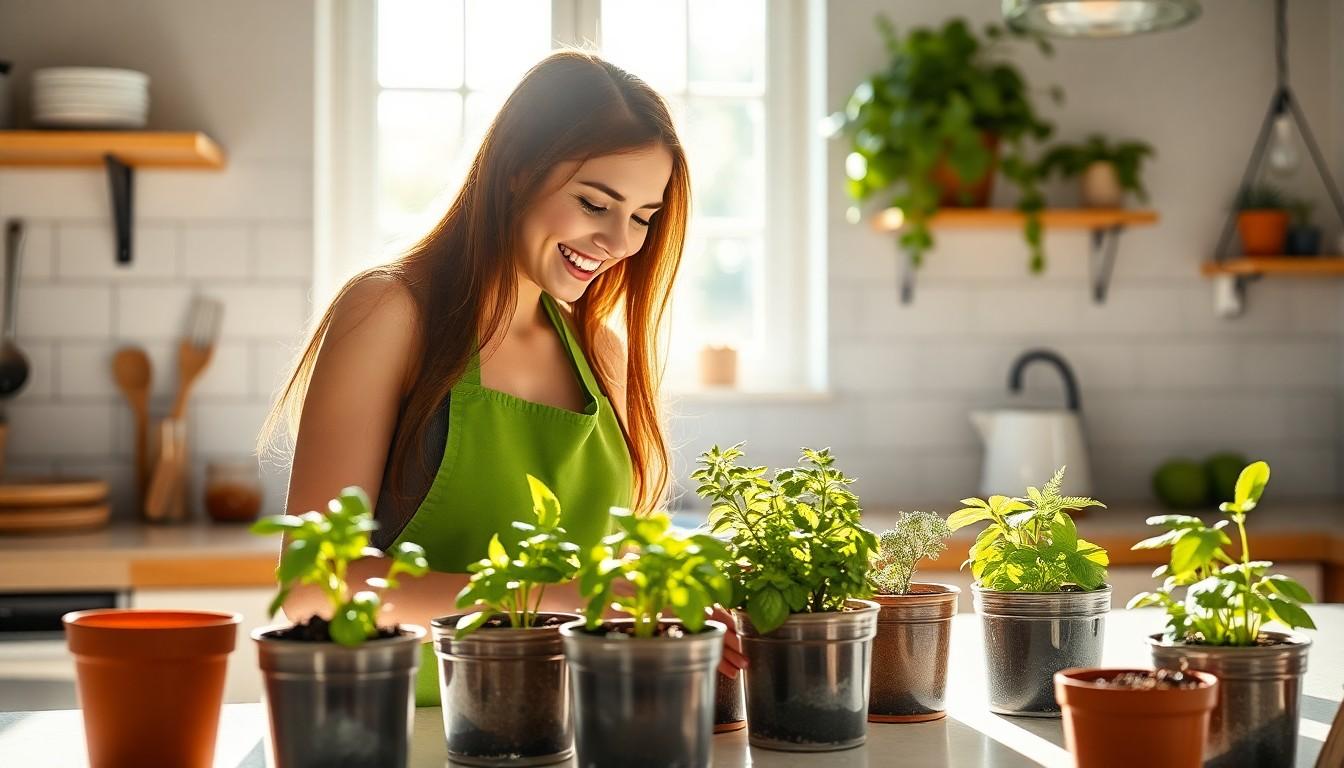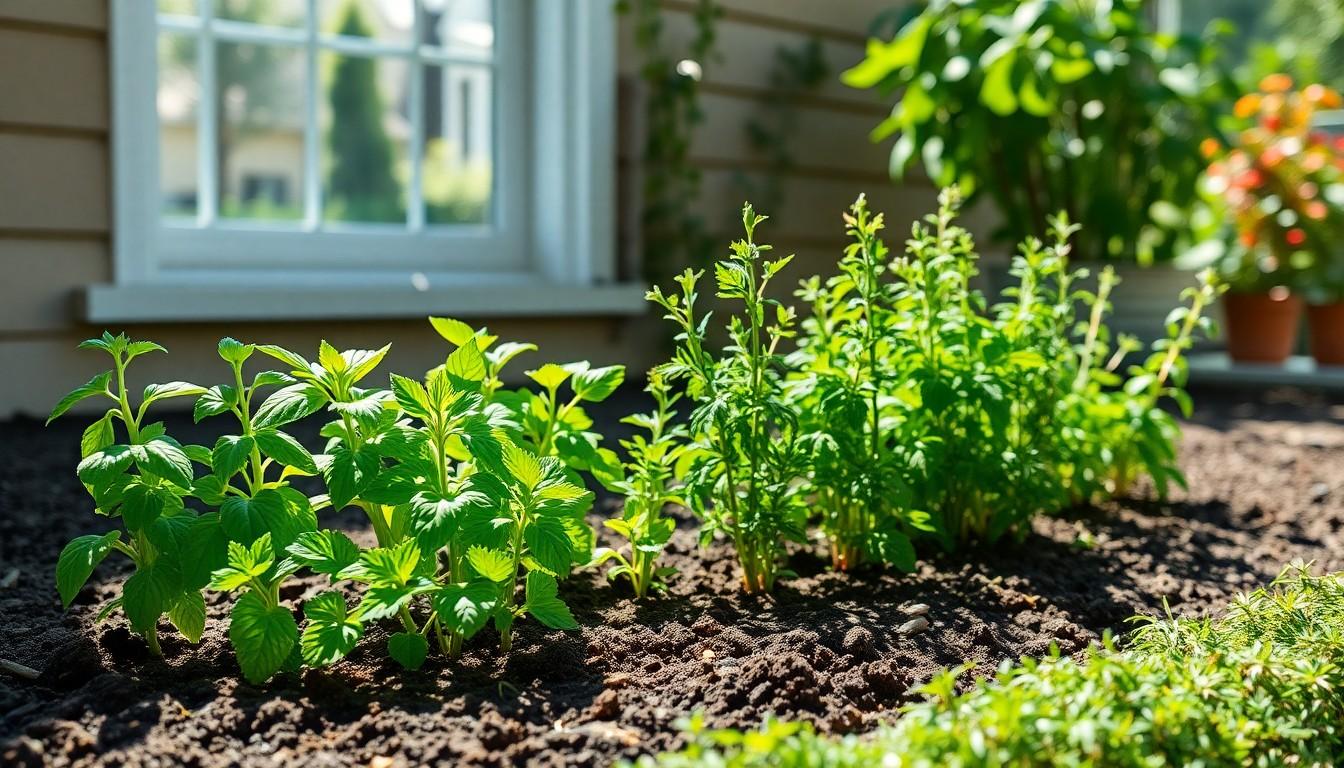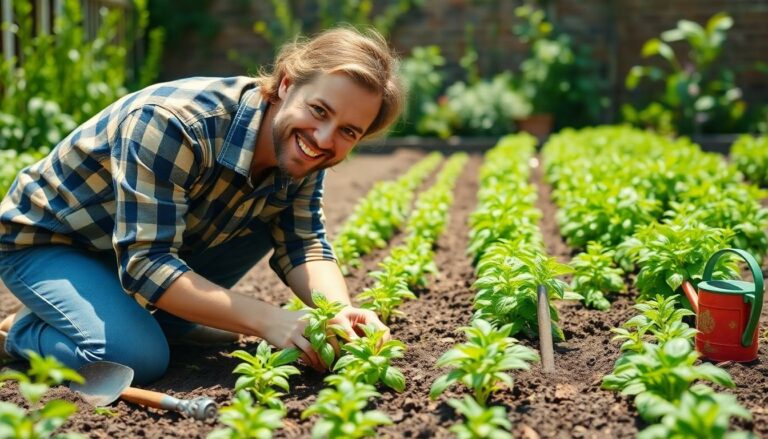Herb Planting Guide: Discover Secrets to a Thriving Home Garden

Imagine stepping into your kitchen and plucking fresh basil or mint right from your windowsill. Sounds dreamy, right? Growing herbs isn’t just for the green-thumbed elite; it’s for anyone who wants to elevate their culinary game without breaking a sweat. With a little guidance, anyone can turn their home into a vibrant herb garden that’ll make even the most seasoned chefs a tad jealous.
In this herb planting guide, readers will discover the secrets to cultivating their own aromatic oasis. Whether they’re looking to spice up their meals or impress guests with a homegrown garnish, it’s all possible. So grab that trowel and get ready to dig into the world of herbs—because who wouldn’t want a little greenery to liven up their life?
Herb Planting Guide
Growing herbs offers not only culinary delights but also health benefits. Familiarizing with the different types of herbs lays the foundation for a successful herb garden.
Types of Culinary Herbs
Culinary herbs enhance flavors in various dishes. Common options include basil, known for its sweet and peppery taste, and thyme, which provides a warm, earthy flavor. Oregano contributes a robust taste, while parsley offers a fresh note. Rosemary, with its pine-like aroma, pairs well with meats. Cilantro, loved for its bright, citrusy flavor, is essential in many cuisines. Each herb adds a unique character to cooking, making them invaluable for home chefs.
Types of Medicinal Herbs
Medicinal herbs offer numerous health benefits. Lavender, for instance, promotes relaxation and aids sleep. Peppermint helps in digestion and alleviates headaches. Echinacea boosts the immune system and may shorten colds. Chamomile supports calming effects and improves sleep quality. Ginger, known for its anti-inflammatory properties, aids in nausea relief. Incorporating these herbs into daily life fosters overall well-being while also providing natural remedies.
Preparing for Herb Planting

Successful herb planting begins with proper preparation. Factors like location and soil quality influence growth significantly.
Selecting the Right Location
Sunlight plays a crucial role in herb growth. Many herbs require at least 6 to 8 hours of sunlight daily. Choosing a spot near a south-facing window or outdoor area ensures optimum light. Additionally, protection from strong winds maintains plant health. Drainage is equally important; a location that avoids standing water prevents root rot. Consider proximity to the kitchen for easy access while cooking. Evaluating these factors enables successful herb cultivation.
Choosing the Right Soil
Soil quality is essential for healthy herbs. Well-draining soil allows excess moisture to escape, promoting root health. Select a mix that combines potting soil, compost, and perlite or vermiculite. This combination provides essential nutrients while maintaining aeration. Testing soil pH, ideally between 6.0 and 7.0, enhances herb growth. Organic options often yield better results due to their nutrient-rich content. Opting for high-quality soil prepares the garden bed for thriving herbs.
Planting Herbs
Planting herbs involves key decisions about how to start and care for them as they grow. Understanding options enhances the likelihood of creating a thriving herb garden.
Sowing Seeds vs. Transplanting
Sowing seeds directly into the soil allows for a natural growth process. This method provides an opportunity for seeds to germinate and establish roots in their chosen environment. Transplanting, on the other hand, offers a head start with more mature seedlings. They often adapt quickly and yield faster results. Each method has distinct advantages, and choosing one depends on the available time and resources. Factors such as climate and specific herb varieties might influence this choice too. A combination of both approaches can also be effective, yielding a diverse herb garden.
Ideal Planting Techniques
Spacing plays a crucial role in the success of herb planting. Each herb should be spaced appropriately to allow air circulation and minimize competition for nutrients. Depth matters as well; seeds typically require a specific depth to germinate. Many herbs thrive in well-draining soil, so ensuring the right soil mix is vital. Watering routines differ by herb type, with some needing moist conditions while others prefer drier soil. Ensuring proper sunlight exposure is essential. Most herbs flourish in 6 to 8 hours of sunlight daily, so gardeners should select sunny spots accordingly.
Caring for Your Herb Garden
Caring for your herb garden ensures flourishing plants and a bountiful harvest. Successful maintenance includes proper watering and regular pruning.
Watering Guidelines
Watering herbs requires consistency for optimal growth. Herbs typically need watering when the top inch of soil feels dry. Avoid overwatering, as excess moisture leads to root rot. Early morning is the best time to water, allowing leaves to dry before evening, which helps prevent fungal diseases. Consider using a drip system or watering can for precise control. Adjust the frequency based on seasonal changes, with more frequent watering during hotter months.
Pruning and Harvesting Tips
Pruning herbs promotes bushier growth and prevents flowering, which can alter flavor. Snip leaves regularly to encourage new growth and maintain plant health. Harvesting should happen early in the day for maximum flavor concentration. Remove leaves and stems carefully to avoid damaging the plant. Take up to one-third of the plant’s foliage at a time to ensure continued growth.
Regularly monitor plants for signs of pests or disease, and always use clean tools to prevent issues.
Common Challenges in Herb Gardening
Herb gardening presents several challenges that can impact the success of the garden.
Pest Management
Pests can threaten the health of herbs. Common culprits include aphids, spider mites, and whiteflies. Implementing natural solutions like introducing beneficial insects, such as ladybugs, often helps control pest populations. Using insecticidal soap or neem oil offers another option without harmful chemicals. He or she should regularly inspect plants for signs of infestation. Prompt action against pests ensures healthy growth and maximizes yield.
Dealing with Weather Conditions
Weather conditions play a crucial role in herb gardening. Extreme temperatures, both hot and cold, can stress plants. When temperatures spike, providing shade becomes essential to prevent scorch. Conversely, frosts pose a risk for tender herbs. Covering plants with frost cloth or bringing pots indoors protects them during cold spells. It’s vital to monitor local weather forecasts to prepare for sudden changes. Adaptation to weather nuances ensures a robust herb garden year-round.
Home Herb Gardening
Growing herbs at home offers a delightful way to enhance culinary experiences and promote well-being. With the right preparation and care, anyone can cultivate a thriving herb garden that brings fresh flavors to the kitchen.
Understanding the needs of different herbs and addressing common challenges ensures success. By following the guidelines for planting, caring, and harvesting, individuals can enjoy a continuous supply of fresh herbs.
Embracing this rewarding endeavor not only elevates meals but also fosters a deeper connection to gardening and nature. With a little effort and attention, a personal herb garden can flourish, providing joy and satisfaction for years to come.



